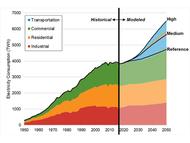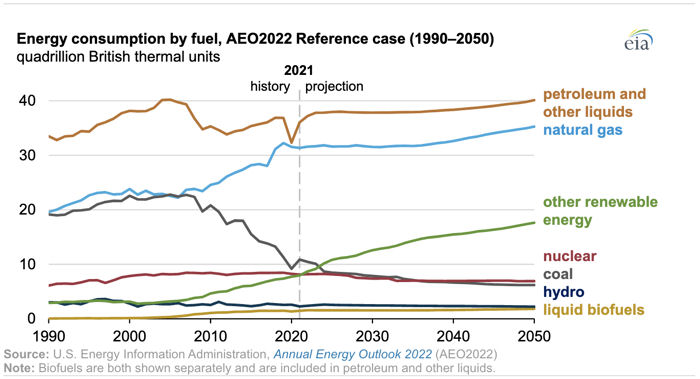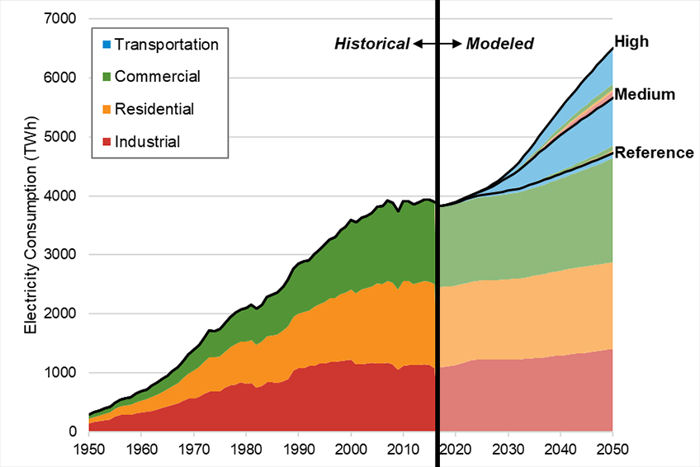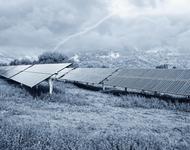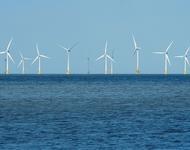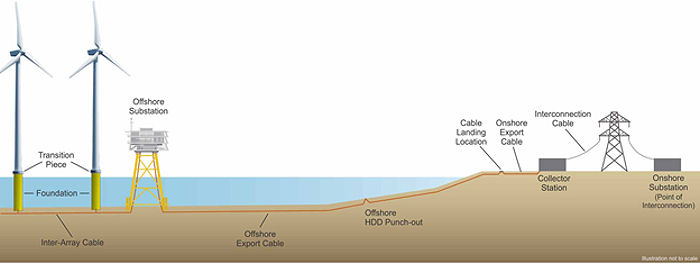The fossil-free, all-electric everything grid envisioned to avoid catastrophic anthropogenic climate change would be a very different grid from that which serves the US today. The fossil-free grid would still include the non-fossil generation currently in service, including hydroelectric, geothermal and biomass generators; and, possibly, some existing and even new nuclear generation.
The all-electric everything transition would require a grid with approximately four times the capacity of the current grid, upgrading existing transmission and distribution infrastructure to handle the increased demand. The existing transmission infrastructure would also have to be expanded to connect a far larger number of smaller generators, frequently in remote locations at some distance from the existing infrastructure. The transmission infrastructure might also need to be restructured to permit longer distance transmission than is currently common.
The intermittent generators connected to the grid would either be required to be configured to be dispatchable with the addition of storage, or the grid would have to be equipped with sufficient storage at multiple locations to compensate for the intermittency or unavailability of multiple intermittent generation sites.
Configuration of each intermittent generation site to be dispatchable would require installation of equipment to increase the DC voltage output of the generators to the battery storage voltage, batteries to store surplus power, inverters to convert the DC to AC and transformers to increase the AC voltage to transmission voltage. The output of each dispatchable generator site would then be connected to the grid.
Configuration of each intermittent generation site to be non-dispatchable would require installation of equipment to invert the DC output of the generators to AC and transformers to increase the AC voltage to transmission voltage. The output of each non-dispatchable generator would then be connected to the grid.
Numerous locations on the grid would be required to install battery farms or other storage approaches to store power supplied by the intermittent generators in excess of grid demand. These battery farms would require the installation of rectifiers to convert the excess AC power from the grid to DC power at battery storage voltage as well as inverters to convert DC power drawn from the batteries to AC for redelivery to the grid at grid voltage when the current intermittent generator output was insufficient to satisfy the contemporaneous demand of the grid. The long-duration storage required for this grid is not currently commercially available. Other storage approaches, such as pumped hydro or compressed air storage, might use the AC power from the grid directly, but face difficult project approval processes.
The selection of the location for storage in the system has efficiency consequences. Assuming that each inversion and rectification step has an efficiency of 95% and that the batteries have a round-trip efficiency of 90%, the dispatchable generation configuration experiences losses of approximately 19% of the generated electricity, while the intermittent generation with grid storage configuration experiences losses of approximately 27% of the generated electricity.
The selection of the location for storage likely also has system investment consequences. The connection of multiple, independent intermittent generation sites to a common storage location might reduce the storage capacity required per unit of generation capacity because of the diversity of locations and generator types.
The type of intermittent generators would be expected to vary as a function of geography and wind and weather conditions. The northern tier of the US experiences lower solar insolation than the southern states, particularly in winter. The northern tier states also experience more snow and ice in winter, which would coat the solar collectors and reduce collection efficiency, periodically to zero. Wind installation in the northern tier states would experience periodic icing and might require the installation of wind turbines with heated blades to prevent or minimize icing, adding cost and parasitic power consumption. The southwestern US has far greater solar availability, but it is frequently located remotely from the loads it would serve. Offshore wind will likely be a significant factor near the coasts.
The current US electric grid has transmission and distribution losses of approximately 6%, of which transmission losses are approximately 1%. Designing the restructured electric grid to permit longer transmission distances would likely increase these transmission losses.
The design of a primarily intermittent renewable generation plus storage powered grid is a very complex problem. A satisfactory system design has yet to be demonstrated.
 The Right Insight is looking for writers who are qualified in our content areas. Learn More...
The Right Insight is looking for writers who are qualified in our content areas. Learn More...

